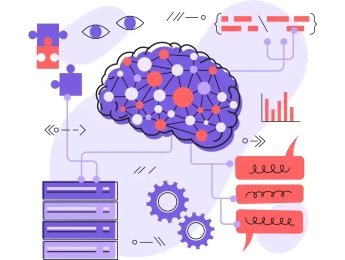Artificial intelligence is a technology that has only appeared in recent years but has rapidly become the standard for many organisations and industries. Its goal is ultimately to improve business productivity and reduce necessary resources.
To effectively implement and manage an artificial intelligence system, it is important to have an in-depth understanding of the types of artificial intelligence and machine learning systems, their typical processes, and their structures. With this knowledge, evaluating existing business functions and identifying areas where AI could potentially improve will be far easier.
The goal of AI is to increase productivity, reduce costs, and reduce resources. However, the overuse of AI can pose many ethical issues. AI has been proven to effectively conduct the tasks of human employees, causing those roles to become redundant. When managing an organisation, it is crucial to find the balance between AI systems and human employees, as AI may not replace the personable relationship a business can build with its customers.
Upon completion of this course, participants will be able to:
- Understand the importance of implementing artificial intelligence functions into a business.
- Identify ways in which artificial intelligence can benefit a business and improve productivity.
- Assess the technologies involved in creating an effective artificial intelligence system.
- Follow a detailed process of planning, designing, implementing, and measuring the performance of an artificial intelligence system.
- Analyse the social, environmental, and ethical implications of artificial intelligence.
- Examine the past and present and make careful predictions about the future of artificial intelligence.
- Ensure a balance between artificial intelligence and human employees.
This course is designed for anyone who wishes to develop artificial intelligence systems to improve business functions. It would be most beneficial for:
- Business Owners
- Senior Executives
- Operations Managers
- IT Managers
- Chief Information Officers (CIOs)
- Artificial Intelligence Engineers
- Machine Learning Engineers
- Business Analysts
This course uses a variety of adult learning styles to aid full understanding and comprehension. Participants will assess case studies of established artificial intelligence systems in businesses to highlight key features and processes.
Participants will participate in a variety of learning exercises, including presentations, group discussions, demonstrations, and practical activities. They will be provided with all the necessary tools to complete these tasks as accurately as possible. Utilising their knowledge, they will have the opportunity to design and create an artificial intelligence system related to their specific roles. This will ensure they develop a full and comprehensive understanding of the taught content.
Day 5 of each course is reserved for a Q&A session, which may occur off-site. For 10-day courses, this also applies to day 10
Section 1: Introduction to Artificial Intelligence
- Defining what an artificial intelligence system is.
- The role of artificial intelligence in businesses and organisations.
- The development of artificial intelligence and how it is used today.
- Assessing the benefits and limitations of artificial intelligence.
- Identifying the purpose and functions of state space speech within artificial intelligence.
Section 2: Machine Learning
- Defining what machine learning is.
- The two types of machine learning – supervised and unsupervised.
- Comparing the differences and evaluating the benefits and limitations of supervised and unsupervised learning.
- Understanding the purpose of clustering, classification and regression and identifying where these would occur.
- Utilising intelligent agents to gather and present information.
- Characteristics of an intelligent agent – real-time problem solving, memory-based storage and analysis of error and success rates.
Section 3: Deep Learning and Neural Networks
- Understanding the purpose and structure of neural networks.
- How deep learning neural networks use data inputs, weights, and bias to mimic the human brain.
- The integration of deep learning neural networks within typical machine learning and artificial intelligence.
- What industries and organisations would be most suited to using deep learning systems?
Section 4: Ethics of Artificial Intelligence
- Ethically merging artificial intelligence and manual business functions.
- The standardisation of artificial intelligence contributes to unemployment.
- How artificial intelligence systems’ conclusions can be biased, discriminatory and inaccurate.
- Implementing AI in customer-facing positions may cause the loss of the personal relationships and rapport built between businesses and consumers.
Section 5: Integrating AI into the Business
- Identifying areas that may benefit from AI integration.
- Effectively planning, designing, implementing, and monitoring AI systems.
- Creating and encouraging a working environment that is open to change.
- Aligning AI with human processes.
- Methods of monitoring AI performance.
Upon successful completion of this training course, delegates will be awarded a Holistique Training Certificate of Completion. For those who attend and complete the online training course, a Holistique Training e-Certificate will be provided.
Holistique Training Certificates are accredited by the British Assessment Council (BAC) and The CPD Certification Service (CPD), and are certified under ISO 9001, ISO 21001, and ISO 29993 standards.
CPD credits for this course are granted by our Certificates and will be reflected on the Holistique Training Certificate of Completion. In accordance with the standards of The CPD Certification Service, one CPD credit is awarded per hour of course attendance. A maximum of 50 CPD credits can be claimed for any single course we currently offer.
- Course Code IND02-106
- Course Format Classroom, Online,
- Duration 5 days














